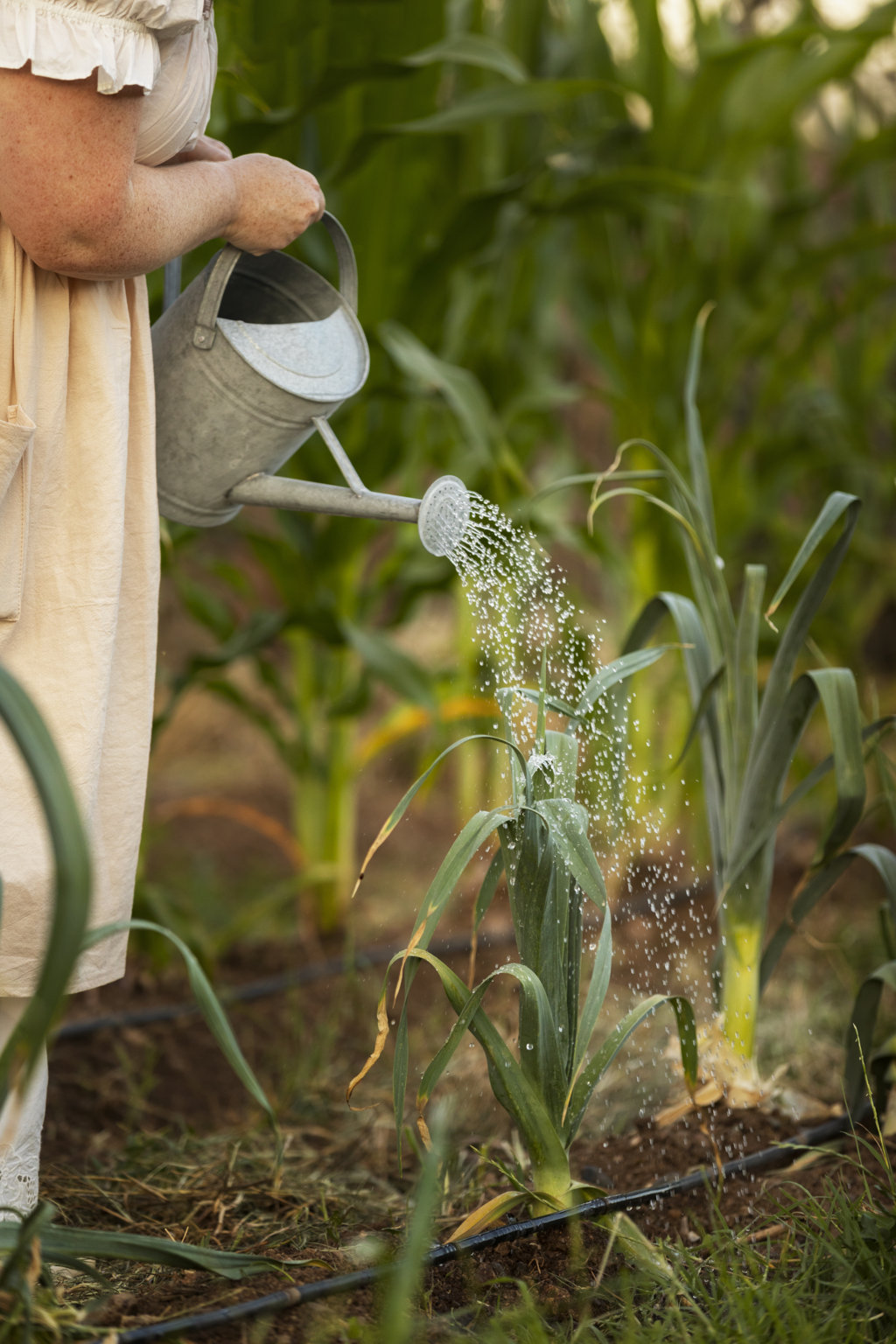
Growing plants in hot and arid climates presents a unique challenge due to limited rainfall and high evaporation rates. To ensure healthy plant growth while conserving water, it’s crucial to use efficient irrigation systems.
In this post, I’ll highlight some of the best water-saving irrigation methods that minimize water consumption while maximizing irrigation efficiency in dry environments.
Drip Irrigation
No doubt that drip irrigation is the best irrigation technique for any climate condition.
In drip irrigation, water is released slowly, drop by drop, directly to the roots. This way, there is no chance of water runoff, evaporation, or excessive watering.
The system can also be automated based on soil moisture levels to prevent overwatering.
Even better is subsurface drip irrigation, where tubing is buried underground, which is especially effective. It virtually eliminates evaporation altogether.
The one thing you must be concerned about is clogging. Using a filter can effectively tackle the clogging.
Micro Spry, AKA Low Pressure Precision Spray
Micro Spray is similar to drip irrigation, but the difference is that micro-spray systems have spray heads that mist plants at low pressure (less than 30 PSI). This method effectively addresses runoff and evaporation.
Moreover, Micro-spray is more cost effective to install than drip irrigation over large areas. It also covers plant foliage more uniformly for better coverage.
The downside of this irrigation technique is it is not quite as water efficient as drip irrigation. Clogging can be an issue since it has small openings.
Rainwater Harvesting
Rainwater harvesting is another irrigation technique for dry and arid landscapes.
Using rainwater for irrigation in a hot climate brings benefits. It is free, pure, and low in salts that damage soil over time. Plants seem to thrive when irrigated by natural rainwater. Implementing a rainwater harvesting system greatly reduces demands on ground and surface waters.
Moreover, it is easy to implement. You have to collect the water from the rooftop or other collection areas. Storage tanks connect to gutters and downspouts to collect roof runoff. Pipes distribute the rainwater to various irrigation zones around the landscape. Filtration and first flush diverters help remove debris before the water reaches the storage containers.
Soaker Hose Irrigation
The Soaker Hose irrigation technique is similar to drip irrigation, but here, there are no holes, and emitters release the water.
Instead, in a soaker hose, the entire hose is porous, releasing water slowly.
A soaker hose is easy to implement, and a water, energy saving method.
The problem with the system is clogging, which can be reduced by installing the filter, and another is it only concentrates irrigating water by the hose-covered land. Outside of the region never receiving water leading.
Smart Irrigation Controller
Smart Irrigation Controllers are not an irrigation technique, but using these smart controllers, like sensors and moisture trackers, helps efficient watering.
These automated controllers monitor weather, soil moisture, and other conditions to adjust the watering schedule. Some controllers even self-adjust their schedules based on plant water needs and changing weather patterns.
This high-tech approach represents the future of sustainable irrigation. Installing a smart controller can reduce water usage by 20-50%.
Mulching
Mulching is another technique to save water.
Mulching simply means covering the soil with organic or inorganic materials to maintain soil health and water levels.
Organic mulch materials like bark, compost, and wood chips help retain soil moisture and prevent evaporation.
Inorganic mulches like gravel and geotextile fabrics are another option. These porous but non-biodegradable products maintain constant soil temperatures and block evaporation.
The equivalent of 2-4 inches of mulch can make a dramatic difference in soil moisture retention, requiring less frequent irrigation.
Greywater Reuse
Greywater Reuse is an effective method for saving water in hot and dry climate conditions.
In this method, wastewater is collected and purified for use in irrigation.
Wastewater from bathroom sinks, showers, bathtubs, and washing machines is recycled to irrigate landscapes and conserve a significant amount of freshwater.
There are two approaches to reusing greywater. A diversion system collects it straight from the household plumbing before it enters the sewer or septic system. The greywater is then filtered and piped to the garden.Alternatively, an on-site treatment system collects greywater post-sewer, filters it, and disinfects it on-site before using it for irrigation.
With proper planning, greywater reuse can provide over half the water needed for landscape irrigation.
Hydrozones
Hydrozone is not an irrigation technique but a method of separating plants based on their water needs.
Turf and flower beds that demand frequent watering are placed in separate irrigation zones from native plants adapted to arid environments.
This kind of grouping of plants with similar water needs into hydrozones helps optimize irrigation efficiency.
The technique is especially useful for large, multi-use landscapes. but it requires careful planning to design the irrigation system around designated hydrozones.
Final Words…
Implementing water-saving irrigation systems is crucial for sustainable gardening and agriculture in arid climates.
By integrating techniques like drip irrigation, micro-spray systems, rainwater harvesting, smart controllers, hydrozoning, and greywater reuse, you can significantly reduce water consumption while ensuring optimal plant growth.
Efficient irrigation not only conserves water but also supports a healthier and more resilient ecosystem, even in the driest conditions.

Leave a Reply